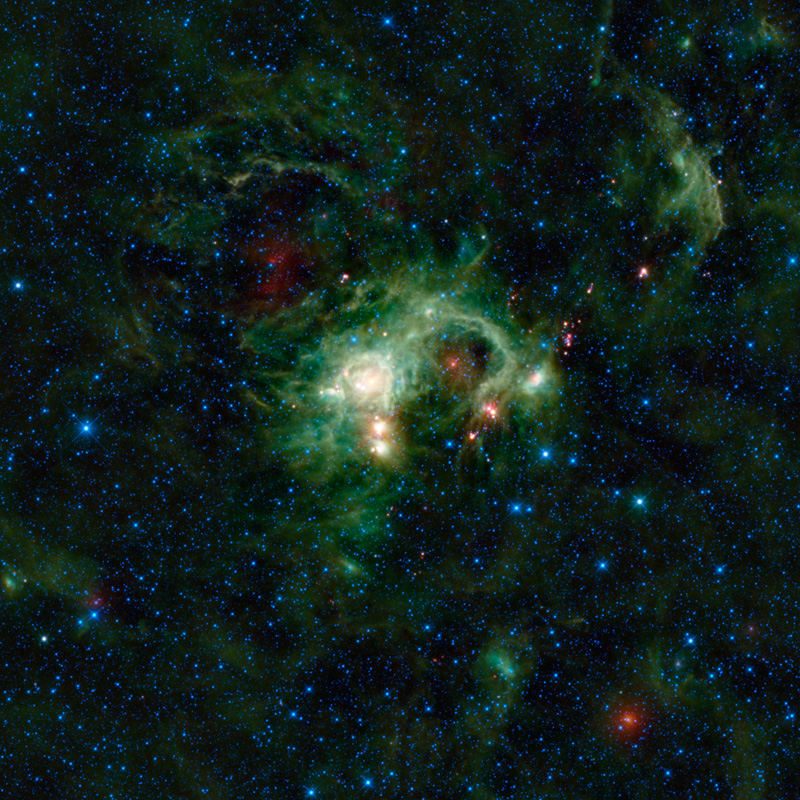



|
April 8, 2011 - WISE Eyes Evolution of Massive Stars In the Perseus spiral arm of the Milky Way Galaxy, opposite the galactic center, lies the nebula SH 2-235. As seen in visible light, SH 2-235 appears to be a small amber-colored dust cloud that spans about a tenth the size of the full Moon. In infrared light, NASA’s Wide-field Infrared Survey Explorer, or WISE, reveals SH 2-235 to be a huge star formation complex – more than 100 light-years across -- as seen in this new view. This image covers an area of the sky nearly five times as high and wide as the full moon (2.44 by 2.44 degrees). SH 2-235 is so named because it is a nebula found in the Sharpless Catalogue. In 1959, Stewart Sharpless from the United States Naval Observatory published a comprehensive catalogue of ionized, or charged, gas clouds, called HII regions, north of minus 27 degrees declination (declination specifies an object’s location on the sky in the same way that latitude does on Earth). The Sharpless Catalogue includes many objects that are commonly known by other names, such as the great Orion nebula, or SH 2-281. However, in the case of SH 2-235, no other name exists to describe this particular region. SH 2-235 was created when two giant clouds collided. The dense material is heated by the star BD+35°1201, causing the cloud’s dust to glow. SH 2-235 is part of a larger cloud complex that includes three other Sharpless HII regions (SH 231, 232, 233). This complex is interesting because it includes examples of several evolutionary stages of star development. For example, the bright orange objects on the lower right (south eastern) part of the nebula are a cluster of stars that are forming into massive stars out of cold clumps. This area is important for studying the early stages of massive star formation, which is still not well understood. Another mysterious object seen in this image is IRAS 05338+3447, the bright red object in the lower right corner. This object was seen by the Infrared Astronomical Satellite, or IRAS, as an indistinct bright spot. The WISE image shows the object much more clearly, but does not immediately reveal if it is associated with the larger star-forming region. There are also several red-colored stars in this image, which are likely young stellar objects. These are baby stars wrapped up in blankets of dust that glow brightly in infrared light Color in this image represents specific wavelengths of infrared light. Blue and cyan (blue-green) represent 3.4- and 4.6-micron wavelengths, which is primarily light emitted from hot stars. Green and red represent 12- and 22-micron wavelengths, which is mostly light from warm dust.Image Credit: NASA/JPL-Caltech/WISE Team |
|||||||||||||||||||
|
||||||||||||||||||||
|
|||

